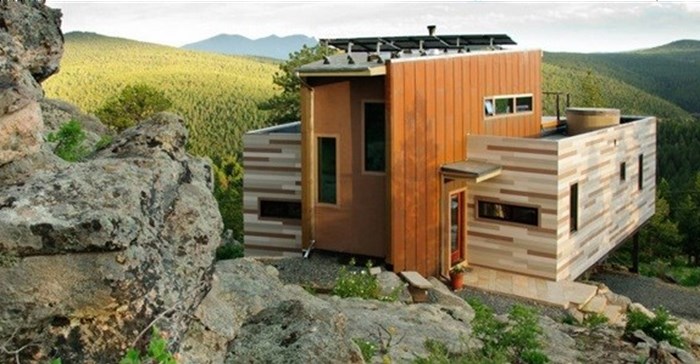Shipping containers and commercial property - a sign of the times

In recent years the shipping container, being both durable as well as climate resistant, has gained popularity within residential as well as commercial property sectors. Multi-storey office or apartment structures house permanent occupants all over the world, as forward thinking architects, developers or governments demonstrate their belief that this unconventional trend is here to stay.
Logical alternative
Shipping containers offer a logical alternative to conventional commercial buildings. Resembling large Lego blocks, they lend themselves to a simple, modular building design which may be combined with a variety of materials such as an assortment of claddings, to give rise to attractive, trendy, yet efficient structures.
Although they may be imagined to be a cheaper method of construction, this is not necessarily the case. Containers, being made of metal, are excellent conductors of heat or cold thus requiring cladding as well as heating or cooling systems to make them habitable. They require similar or better finishes than a conventional structure, as well as professional fees, cost of services, and so forth, causing the overall spend to be not too dissimilar.
There are benefits
In the long-term, however, containers should work out to be more economical for several reasons. They are durable, resisting the rigours of harsh climatic conditions. They are also portable so may be moved to another location without much difficulty or loss of working time, greatly reducing the cost of redeveloping a new property. They also allow fast-tracking of the building process, significantly reducing the construction time. “Buildings constructed from shipping containers bring a uniqueness to modern commercial property when they are skilfully designed, attractively appointed and favourably located; an attractive alternative for any discerning tenant.
There is an ecological benefit as well. The United States alone, although re-using three quarters of the containers they import annually, still have a surplus of over five-million spare containers per year. These would use a vast quantity of electricity if they were to be melted down for recycling. By using these containers as building modules, they are reducing the need for other resources such as clay bricks or timber to be produced for the building industry. It is far better to turn this surplus into necessary housing or commercial premises than allow them to take up land in ever growing container dumps.
Be aware
It would be wise to check the building regulations in your area with regard to the use of shipping containers as building modules. Rather be sure before embarking on a project which could attract legal hitches, troublesome delays or costly fines. Employing the services of a good architect or developer who knows the regulations should save you time as well as trouble.
While containers are standardised, mass produced objects which encourage great originality there may be a few draw-backs. Designs must necessarily link as well as stack the units, making sure to exclude the natural elements while giving stability to the structure. In order to exclude the natural elements, joins must be completely waterproof, thus utilising the containers requires expertise in design as well as in attachment.
At the start of the container-building industry the thought was rife that modules would only be useful within ghettos, providing sub-economic housing for the underprivileged, but this is certainly no longer the case. Enterprising designers, architects as well as engineers have joined forces to erect some amazing structures which can take their place proudly among conventional building styles. As an outside-of-the-box solution to a commercial accommodation need, be it a small spaza shop, a multi-storey office or a hotel, shipping containers are fulfilling a need for fast, easily maintained structures which may be permanent, temporary or portable.



















